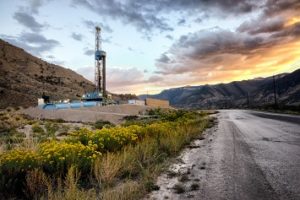In an apparent timing maneuver, the Bureau of Land Management (BLM) has formally proposed to rescind the Obama administration’s 2015 rule establishing requirements for hydraulic fracturing (fracking) of oil and gas (O&G) reserves on federal and tribal lands.
The proposal was published in the July 25, 2017, Federal Register (FR), 2 days before the U.S. Court of Appeals for the 10th Circuit is scheduled to hear oral arguments on an appeal by environmental groups seeking to put the 2015 rule into effect. The groups requested that the 10th Circuit overturn a June 2016 ruling by a U.S. district judge, who set aside the fracking rule. The environmental groups contend that BLM’s current proposal is timed to persuade the court to stay the appeal. Earthjustice, which is representing the environmental groups, says that publication of the proposal will not dissuade them from going to court on July 27.
Comprehensive Fracking Requirements
In the 2015 rule, the BLM significantly expanded federal provisions applicable to fracking on public and tribal lands. New requirements for energy companies included a specific application to conduct fracking; provision of information about groundwater in the fracking area; verification of the physical stability of fracking wells; monitoring and reporting of well pressure during operations; management of produced water; submission to the BLM of the chemicals used in fracking; and provision of an explanation of why the identity of chemicals cannot be made public because they are trade secrets.
After taking office, President Donald Trump issued an Executive Order (EO) directing federal agencies to review and suspend, revise, or rescind rules that impede the development of domestic energy resources. The 2015 rule was included among the four rules the EO directed the BLM to address.
Current Regulation Is Enough
In its proposal, the BLM says the 2015 rule should be rescinded for the following reasons:
- Most states are either currently regulating fracking or are in the process of developing regulations. When the 2015 final rule was issued, 20 of the 32 states with federal O&G leases had regulations addressing fracking. Since promulgation of the 2015 final rule, an additional 12 states have introduced fracking laws or regulations. As a result, all 32 states with federal O&G leases currently have laws or regulations that address hydraulic fracturing operations.
- Disclosures of the chemical content of fracturing fluids to state regulatory agencies and/or databases such as FracFocus are more prevalent than they were in 2015, and there is no need for a federal chemical disclosure requirement. Companies are making those disclosures on most of their operations either to comply with state law or voluntarily. There are 23 states that currently use FracFocus for chemical disclosures. These include six states where the BLM has major O&G operations, including Colorado, Montana, North Dakota, Oklahoma, Texas, and Utah.
- The BLM has several preexisting authorities that it will continue to rely on if the 2015 final rule is rescinded. These authorities reduce the risks associated with hydraulic fracturing by providing specific requirements for well permitting, construction, casing, cementing, and disposal of produced water.
- Instances of environmental damage resulting from fracking conducted before 2015 are rare.
If made final, the proposal would return BLM’s regulations affecting fracking to language that existed immediately before the published effective date of the 2015 rule.

